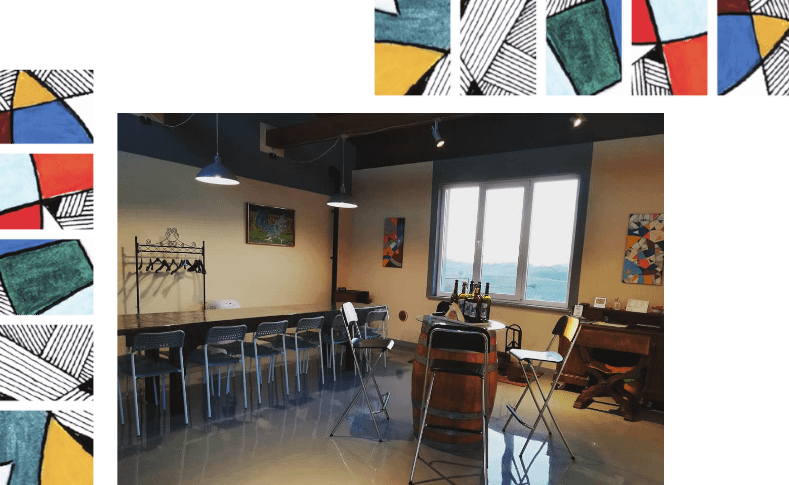
At the heart of our idea of hospitality is the tasting room, a space designed specifically to allow visitors to taste our wines directly on the farm. It can accommodate up to a maximum of 25 people.
You can contact us to book a guided tour of our vineyards and cellar, with later wine and sparkling wine tasting.
Or use the contact form



San Damiano al Colle is the classic old village, which has preserved all the appeal of the agricultural tradition.
It is located on a hilly slight slope and it is characterized by narrow streets and houses, which communicate history and culture of the Heart (source: “Guidando con Gusto”, SAGEP, 2016).
Here it is possible to see the ruins of the ancient Castle, those ones of the Rocchetta, also defined as Corte dei Gatti or Torrone (which means “big tower”), for the presence of huge tower. Today it is visible in the center of the village, near the main Church.
The latter is very beautiful and it is dedicated to Saints Cosma and Damiano: a wonderful example of XVIII century art.

Oltrepò Pavese is a very varying territory, where you can find both hills and mountains.
It is located between Emilia and Piedmont regions, being between Alessandria and Piacenza Province. The Po river divides this area from the other part of the Pavia Province.
Oltrepò Pavese extends for 1110 square kilometers, two thirds of which are divided between hills and mountains, with a nice variety of landscapes.
There are sixty-eight municipalities in Oltrepò Pavese, charachterized by a rich cultural, historical and artistic heritage. The agricultural activities are very important in this area. Furthermore, there are some very important agro-food products, like, first of all, wines.
Over time, in this area, a particular way of producing food and wine has developed, based on the philosophy of quality. Moreover, agriculture is really integrated with the environmental system. Especially in viticulture sector, the historical and traditional elements join the continuous process of innovation and development of production techniques. Hence, wine has a strong cultural value related to the territory. (source: “Storia di un territorio rurale”, Luciano Maffi, 2010).
From the viticulture point of view, Oltrepò Pavese is particularly important in the Italian context for the features of its productions.
The hills of this territory are the third production area of certified wines in Italy (after Chianti and Asti areas), in terms of hectares with vineyards, registered to the official Register, and of hectoliters produced (source: Consorzio Tutela Vini Oltrepò). Besides, Oltrepò Pavese is the first viticulture area in Lombardy (with the 63% of area with vineyards, it produces the 55% of wine of the whole region).
The most cultivated vine variety are Croatina (4.000 hectares), Barbera (3.000), Pinot Noir (about 3.000), Riesling (1.500), Moscato (500). All these vine varieties cover 84% of the whole cultivated area in Oltrepò.
Here the production of Pinot Noir represents about 75% of the entire national production of this vine variety, as well as Croatina represents about 70% of the whole national production.
Pavia Province, with about 3.000 hectares of Pinot Noir is the first area, in terms of extension, in Italy and one of the most important areas in the world for the production of sparkling wines, with 12 millions bottles per year (1.5 million of which is Spumante Traditional Method).
In the Italian context, Riesling (Italic and Rhenish) has the same first place, since it has found the ideal land in a micro-zone made up by valleys in the central part of Oltrepò Pavese.
Home » Hospitality
Phone +39 0385 75232
Mobile +39 339 161 92 22
E-mail: info@alessiobrandolini.com
